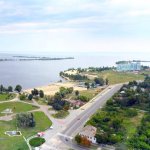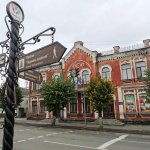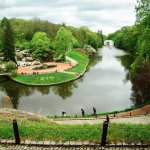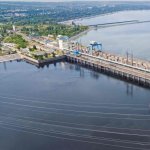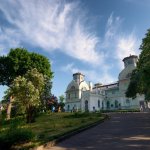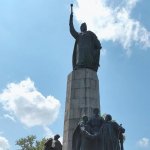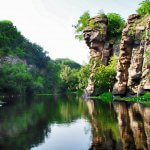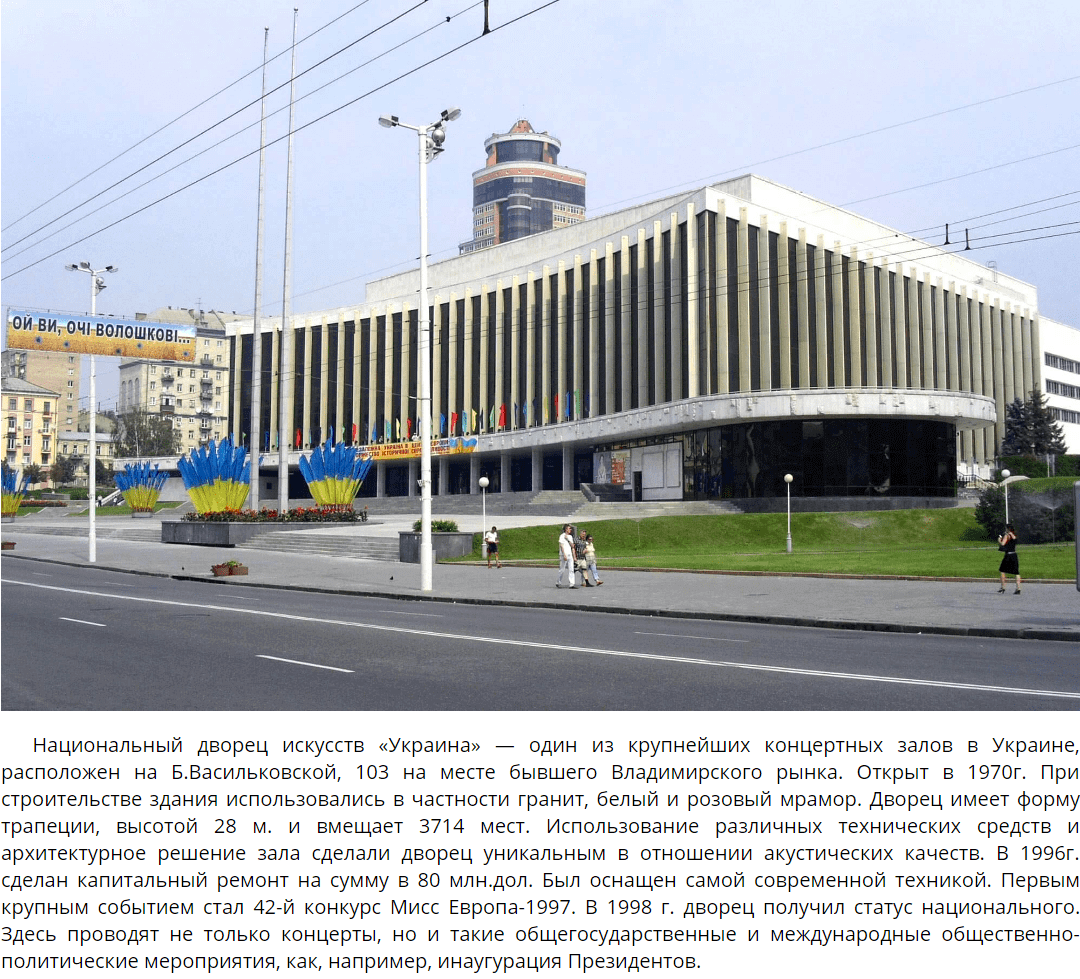Excursions in Cherkasy region
We carry out individual tours around the city of Cherkasy. The city is both industrial, and cultural center of the region. Situated on the hills near the Dnieper, Cherkasy fascinates by its picturesque views. Thousands of tourists come here every year to enjoy the city and its beauty, and, of course, to visit a Buddhist temple, which has no analogues in Ukraine. In addition, we offer a choice of excursions to cities of Cherkasy region, such as Kaniv, Uman, Buky, Chyhyryn and others (see below).
CHERKASY REGION MAP
SIGHTS OF CHERKASY REGION
- Cherkasy
- Uman
- “Sofiyivka”
- Kaniv
- Kaniv hydroelectric station
- Korsun-Shevchenkivskyi
- Chyhyryn
- Buky canyon
Cherkasy – a city of regional and industrial importance, located on the right bank of the Kremenchuk reservoir (195 km from Kyiv), is a regional centre. Today it is also the cultural centre of the region. The uniqueness of the city is its location on the hills along the Dnipro river. Cherkasy are at the foot of the Dnipro, which here is not only wide, but very wide – the distance between the banks reaches up to 13 km. This is the largest width, than in any other large city on the river. Therefore, the favourite place of citizens and the venue for the events is the “Rose Valley” park, which is laid out on the shore of the reservoir, from where it opens an unparalleled view of the Dnipro. Near the park there is a visiting card of Cherkasy – the Hill of Glory, on top of which there is a majestic statue “Motherland”. A special attraction in the city is the Buddhist temple “White Lotus” – a building built in 1988, which has no analogues in Ukraine. In addition, the temple is one of the largest in Europe. The temple regularly hosts master classes on yoga, kung fu and meditation. You can get to the territory of the monastery by appointment with an excursion. Architectural buildings of the XIX century, cathedrals and churches, museums, many interesting monuments have also been preserved in Cherkasy. For example, in the city there is a well-known monument to the plumber. It should be noted that in Cherkassy there is a street Khreshchatyk and a monument to Holokhvastov and Pronya Prokopovna, which is in no way inferior to the Kyiv analogue, set on the Andriivsky descent.
Uman – a city in the Cherkassy region (212 km from Kyiv), located at the confluence of the Kaminka and Umanka rivers, from where it takes its name. For the first time the city was mentioned in 1616 and territorially located on the border with Poland, undergoing constant raids and destruction. And only in 1726 begins the development of Uman, when this area passes into the possession of the Poles Francis Potocki. By the beginning of the 1760’s the city became one of the most important centres of the Right-bank Kyiv region. But another attack of rebels in 1768 (“Haidamak”) led the city to complete decline. The restoration of Uman began in 1795. Today Uman is a well-known all over the world city and a popular tourist centre. Its main attraction is the park “Sofiyivka”, founded in 1796 by Polish nobleman Stanislav Pototski for his wife Sophia. A park with an area of almost 180 hectares annually is visited by more than 500 thousand people. Here you can see a variety kinds of trees and shrubs, created ponds and waterfalls, architectural structures and sculptures. “Sofiyivka” is a monument of landscape type of world garden and park art of the turn of the XVIII – XIX centuries. In addition, the grave of the founder of the Breslov Hasidism, Rabbi Nachman of Breslov, is located in Uman, which annually attracts more than 30,000 Hasidic pilgrims to Rosh Hashanah (the celebration of the Jewish New Year).
Kaniv – a city in Cherkasy region (140 km from Kiev) on the right bank of the Dnieper. It was first mentioned in the XI century and later in 1144, when Prince Vsevolod founded the church of St. George here. In the middle of the XII century, it was considered to be a large city which played an important role in life of Kyiv Rus. In the XVI century, Kaniv becomes a Cossack shrine. Zaporizhzhya Cossacks, who no longer participated in the battles, began to settle on Chernecha Mountain. So, hetman Samiilo Kishka is buried here. In 1861, the remains of T. Shevchenko were buried on the mountain. Later, the Tarasova Gora memorial complex, which today includes 8 monuments of cultural heritage, was opened in Kaniv. The largest monument to the great Kobzar in Ukraine is also installed here. Also the sights of the city include the Assumption Cathedral (XII century), the Kanivska Hydroelectric Power Station and the Kanivsky Nature Reserve, created in 1923. From Kiev to Kaniv one can reach along the Dnieper by boat belonging to Kyiv-Kaniv- Kyiv river cruise.
Korsun-Shevchenkivskyi – a city in Cherkasy region (170 km from Kyiv). Until 1944, it was called Korsun. This is one of the oldest cities in Ukraine, where settlements of the Trypillia and Chernyakhiv cultures, the Bronze Age and Scythian times were found. It was founded by Yaroslav the Wise in 1032 as a fortress to protect the southern borders of Kyiv Rus. It was an important defense center until the end of the 12th century. Today, the main attraction of Korsun-Shevchenkivsky is a palace and park complex which is one of the best memorials of romanticism style in Ukraine (its area is 97 hectares). The ensemble consists of the former estate of the princes Lopukhin-Demidov and landscape park that is a monument of landscape gardening art of the XVIII-XIX centuries. Museums are located in the premises of the complex.
Chyhyryn – a small town in Cherkasy region (250 km from Kyiv). It is known as the first capital of Ukraine. Chigirin was first mentioned in the XVI century. During 1648-1676, Chigirin was one of the largest settlements of the state a residence of the hetmans (Khmelnitsky, Vygovsky, Doroshenko, etc.). Today there is a historical reserve “Chigirin”, founded in 1989. It comprises monuments, most of which are associated with the Cossacks. The main attractions include the Castle Hill with the remains of fortifications; the residence of Bogdan Khmelnitsky, as well as museums.
Buky – a village in the Cherkassy region on the Gorny Tikich River (190 km from Kyiv). In recent years, this place is gaining popularity and alluring tourists with its picturesque nature. Its main beauty is the Buky canyon – a rocky canyon on the Gorny Tikich River near the village of Buky. The canyon itself is not large – its length is about 5 km. The Gorny Tikich River flows in the Proterozoic granites, forming a deep (up to 20 m) and narrow (in some places 20-40 m) canyon. The Buky canyon has the status of a state nature monument of local significance. Atypical for Central Ukraine nature of this area is amazing with its landscapes, and overhanging cliffs are similar to the Norwegian fjords. Canyon attracts to itself fans of active leisure. Canoeing, rafting, rock climbing – all this is possible to organize here, releasing a little adrenaline.






